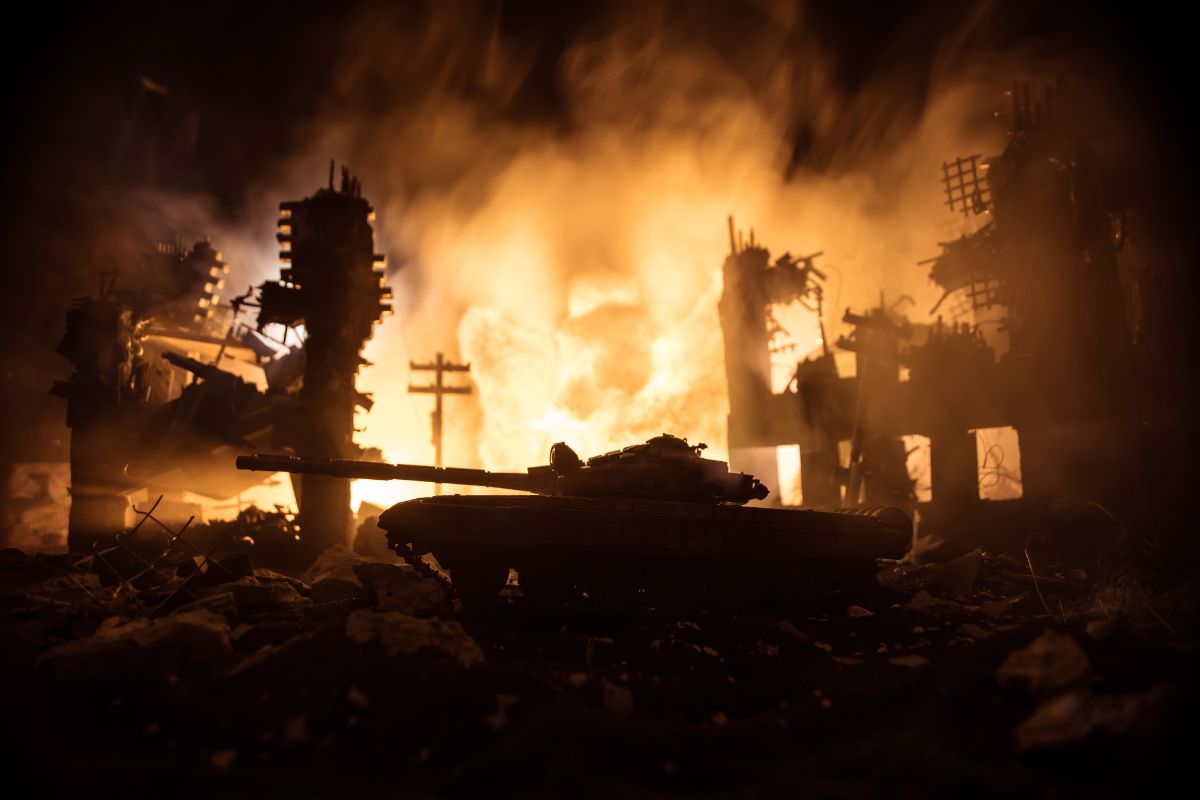
Why did the War in Ukraine start? The War in Ukraine began in 2014 when Russia annexed Crimea, a region that was part of Ukraine. This move followed Ukraine's Euromaidan protests, which led to the ousting of President Yanukovych. Russia's actions sparked outrage and led to a conflict between Ukrainian forces and Russian-backed separatists in Eastern Ukraine. The situation escalated in 2022 when Russia launched a full-scale invasion, citing security concerns and the need to protect Russian-speaking populations. This conflict has caused significant human suffering, economic turmoil, and geopolitical tensions. Understanding the origins helps grasp the complexities and stakes involved.
The Beginning of the Conflict
The war in Ukraine has captured global attention. Understanding its origins helps grasp the complexities involved.
- The conflict began in 2014 after Russia annexed Crimea, a move widely condemned by the international community.
- Pro-Russian separatists in Eastern Ukraine declared independence, leading to intense fighting in the Donbas region.
- The annexation of Crimea followed the ousting of Ukraine's pro-Russian president, Viktor Yanukovych.
- Russia's actions in Crimea were justified by claims of protecting ethnic Russians and Russian speakers.
- The conflict has roots in historical tensions between Ukraine and Russia, dating back to the Soviet era.
Key Players and Alliances
Several nations and organizations have played significant roles in the war, either directly or indirectly.
- Ukraine has received substantial support from Western countries, including the United States and members of the European Union.
- NATO has provided non-lethal aid and training to Ukrainian forces, though it has not engaged in direct military action.
- Russia has been accused of supplying weapons and troops to the separatists, though it denies direct involvement.
- The Organization for Security and Co-operation in Europe (OSCE) has monitored ceasefires and reported on human rights abuses.
- Various volunteer battalions, some with controversial far-right affiliations, have fought on both sides.
Humanitarian Impact
The war has had devastating effects on civilians, leading to a humanitarian crisis.
- Over 13,000 people have died since the conflict began, including civilians, soldiers, and separatists.
- More than 1.5 million people have been internally displaced within Ukraine.
- The war has disrupted access to basic services like healthcare, education, and clean water.
- Numerous reports of human rights abuses, including torture and unlawful detentions, have emerged from the conflict zones.
- International organizations like the Red Cross and UNHCR have been involved in providing humanitarian aid.
Economic Consequences
The war has also had significant economic repercussions for Ukraine and the broader region.
- Ukraine's economy has suffered, with GDP shrinking by nearly 7% in 2014 alone.
- The conflict has disrupted trade routes and industries, particularly in the Donbas region, which was an industrial hub.
- Sanctions imposed on Russia by Western countries have also had economic impacts, affecting global markets.
- The war has led to increased military spending in Ukraine, diverting funds from other critical areas.
- Reconstruction efforts in war-torn areas are expected to cost billions of dollars.
Diplomatic Efforts and Peace Talks
Various attempts have been made to resolve the conflict through diplomacy.
- The Minsk Agreements, signed in 2014 and 2015, aimed to establish a ceasefire and political resolution but have largely failed.
- France and Germany have played key roles in mediating peace talks between Ukraine and Russia.
- Despite numerous ceasefires, violations have been frequent, undermining trust between the parties.
- The Normandy Format, involving Ukraine, Russia, France, and Germany, has been another platform for negotiations.
- Diplomatic efforts have been complicated by differing interests and mutual distrust among the involved parties.
Current Situation and Future Prospects
Understanding the current state of the conflict and its potential future is crucial.
- As of 2023, the conflict remains unresolved, with sporadic fighting continuing in Eastern Ukraine.
- Ukraine has strengthened its military capabilities with Western aid but still faces significant challenges.
- Russia's geopolitical ambitions and Ukraine's desire for closer ties with the West continue to fuel tensions.
- The international community remains divided, with some countries supporting Ukraine and others backing Russia.
- The future of the conflict remains uncertain, with potential for both escalation and resolution depending on diplomatic efforts and geopolitical shifts.
Reflecting on the War in Ukraine
The War in Ukraine has reshaped global politics, economies, and human lives. Understanding the key facts helps grasp the conflict's complexity. From the annexation of Crimea to the ongoing battles in the Donbas region, the war has had profound impacts. Millions have been displaced, and thousands have lost their lives. The international community remains divided, with some nations supporting Ukraine while others back Russia. Sanctions, diplomatic efforts, and peace talks continue, but a lasting resolution seems elusive. The resilience of the Ukrainian people and the geopolitical maneuvers of global powers underscore the war's significance. Staying informed about these events is crucial, as they affect not just Ukraine but the entire world. Let's hope for a peaceful resolution soon.
Was this page helpful?
Our commitment to delivering trustworthy and engaging content is at the heart of what we do. Each fact on our site is contributed by real users like you, bringing a wealth of diverse insights and information. To ensure the highest standards of accuracy and reliability, our dedicated editors meticulously review each submission. This process guarantees that the facts we share are not only fascinating but also credible. Trust in our commitment to quality and authenticity as you explore and learn with us.
